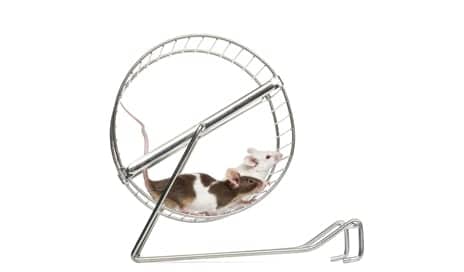Exercise may be able to enhance the development of new brain cells in the adult brain, according to a recent study.
The study on mice, published recently in the first issue of Brain Plasticity, a new journal from IOS Press, notes that mice that spent time running on wheels not only developed twice the normal number of new neurons, but also showed an increased ability to distinguish new objects from familiar objects, per a media release from IOS Press.
In their study, lead investigator Josef Bischofberger, PhD, professor, Department of Biomedicine, University of Basel (Switzerland) and co-investigators Stefanie Heigele, PhD, and Leoni Bolz tested two groups of mice, which were housed either without (sedentary) or with running wheels (voluntarily running) using a novel object recognition (NOR) task to assess learning and long-term memory. As rodents prefer to spend more time with novel objects than familiar ones, the researchers first exposed the mice to two identical objects (cones or pyramids, in either black or white).
After 1.5 hours, one of the objects was replaced with a new object (cone for pyramid or vice versa) and the mice were observed. After 24 hours elapsed, the new object was again swapped, either with a similar object (same color but different shape) or a distinct object (different color and shape), the release explains.
After the short 1.5-hour interval, both running and sedentary mice were able to distinguish similar and distinct objects. However, after 24 hours, a difference was observed. Whereas distinct objects were remembered and recognized by both cohorts of mice, only the running mice could faithfully distinguish similar-looking objects. Investigators determined, therefore, that the running mice had developed better pattern separation capabilities than sedentary mice.
To investigate further, the researchers looked for changes in the brains of the mice. By using markers that could identify newly formed brain cells, they found that running mice developed about twice as many new cells, and those cells had longer dendrites, compared to the sedentary mice, which facilitates the formation of new synaptic contacts between the nerve cells, the release continues.
“Although running induces both substantial changes in number and morphology of young neurons as well as significant changes in learning behavior, this does not prove a causal relationship,” notes Bischofberger, in the release.
“Nevertheless, our results, together with previous findings, suggest that the enhanced pattern separation during memory testing is most likely mediated via running-induced increase in adult neurogenesis,” he continues.
[Source(s): IOS Press, Science Daily]





